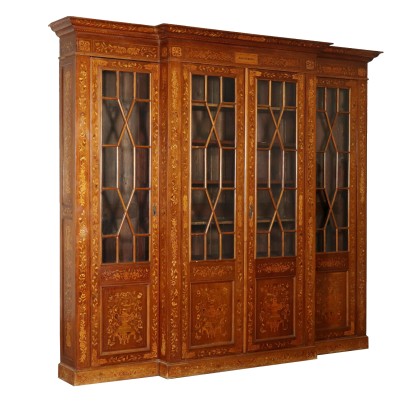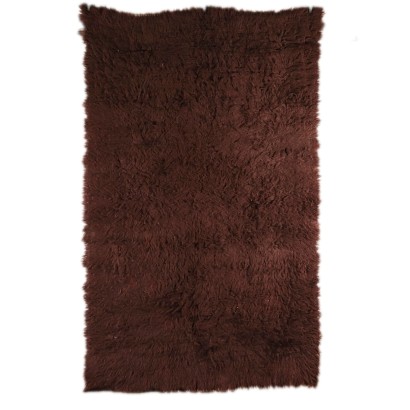Large Bookcase Maple Mahogany Glass Doors Italy 1800s
Features
Age: 19th Century / 1801 - 1900
Origin: Holland
Main essence: Maple , Mahogany
Description
Large Dutch bookcase. Four doors with glass panel and wooden grill. Pediment with jutting frame. Rich maple inlays with amphorae, leaves, flowers and tulips. 'Bibliotheek' written on the front side. Manufactured in Holland, second half of the 19th century.
Product Condition:
Fair condition. Wear consistent with age and use.
Dimensions (cm):
Height: 258
Width: 291,5
Depth: 52
Additional Information
Age: 19th Century / 1801 - 1900
19th Century / 1801 - 1900Main essence:
Maple
Hard, light wood used for inlays. It grows mainly in Austria, but it is widespread throughout the northern hemisphere, from Japan to North America, passing through China and Europe. It is one of the lightest woods ever, tending to white, it is similar to lime or birch wood. The briar is used in the production of ancient secretaires .Mahogany
It is one of the most precious and sought-after woods in cabinet making. It was discovered in Central America around 1600 and began to be imported to England in the 1700s. Much appreciated for its hardness and indestructibility, it became widespread following the blocking of walnut exports from France in 1720 and the consequent elimination of English import duties on mahogany from the colonies in America and India. The most valuable version comes from Cuba, but it became very expensive. At the end of the 18th century it began to be used also in France in Louis XVI, Directory and Empire furniture, its diffusion declined starting from when Napoleon, in 1810, forbade its import. It was generally used in the manufacture of elegant furniture, due to its characteristics and beautiful grain. It could also interest you





































